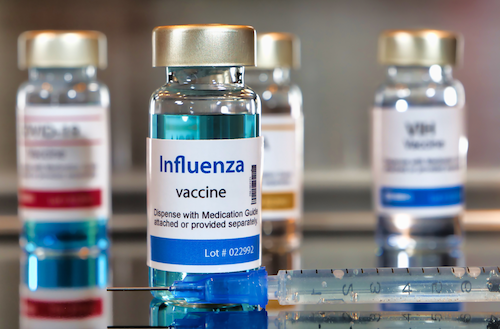
November 30, 2022 – An experimental mRNA-based vaccine against all 20 known subtypes of influenza virus provided broad protection from otherwise lethal flu strains in initial tests, and thus might serve one day as a general preventative measure against future flu pandemics, according to researchers from the Perelman School of Medicine at the University of Pennsylvania.
The “multivalent” vaccine, which the researchers describe in a paper published in Science, uses the same messenger ribonucleic acid (mRNA) technology employed in the Pfizer and Moderna SARS-CoV-2 vaccines. This mRNA technology that enabled those COVID-19 vaccines was pioneered at Penn. Tests in animal models showed that the vaccine dramatically reduced signs of illness and protected from death, even when the animals were exposed to flu strains different from those used in making the vaccine.
Influenza viruses periodically cause pandemics with enormous death tolls. The best known of these was the 1918-19 “Spanish flu” pandemic, which killed at least tens of millions of people worldwide. Flu viruses can circulate in birds, pigs, and other animals, and pandemics can start when one of these strains jumps to humans and acquires mutations that adapt it better for spreading among humans. Current flu vaccines are merely “seasonal” vaccines that protect against recently circulating strains, but would not be expected to protect against new, pandemic strains.
The strategy employed by the Penn Medicine researchers is to vaccinate using immunogens—a type of antigen that stimulates immune responses—from all known influenza subtypes in order to elicit broad protection. The vaccine is not expected to provide “sterilizing” immunity that completely prevents viral infections. Instead, the new study shows that the vaccine elicits a memory immune response that can be quickly recalled and adapted to new pandemic viral strains, significantly reducing severe illness and death from infections.
The experimental vaccine, when injected and taken up by the cells of recipients, starts producing copies of a key flu virus protein, the hemagglutinin protein, for all twenty influenza hemagglutinin subtypes—H1 through H18 for influenza A viruses, and two more for influenza B viruses.
In mice, the mRNA vaccine elicited high levels of antibodies, which stayed elevated for at least four months, and reacted strongly to all 20 flu subtypes. Moreover, the vaccine seemed relatively unaffected by prior influenza virus exposures, which can skew immune responses to conventional influenza vaccines. The researchers observed that the antibody response in the mice was strong and broad whether or not the animals had been exposed to flu virus before.
